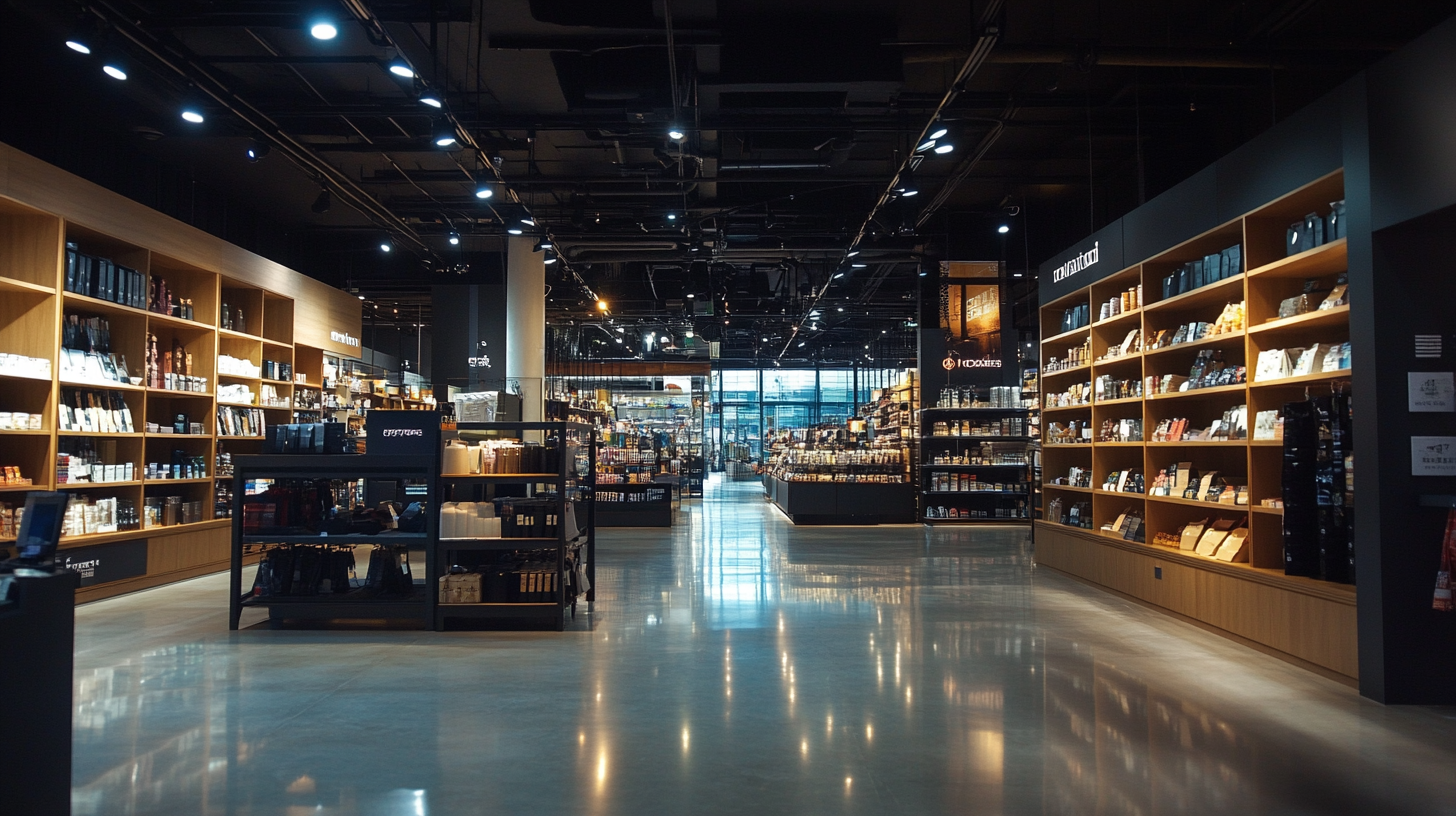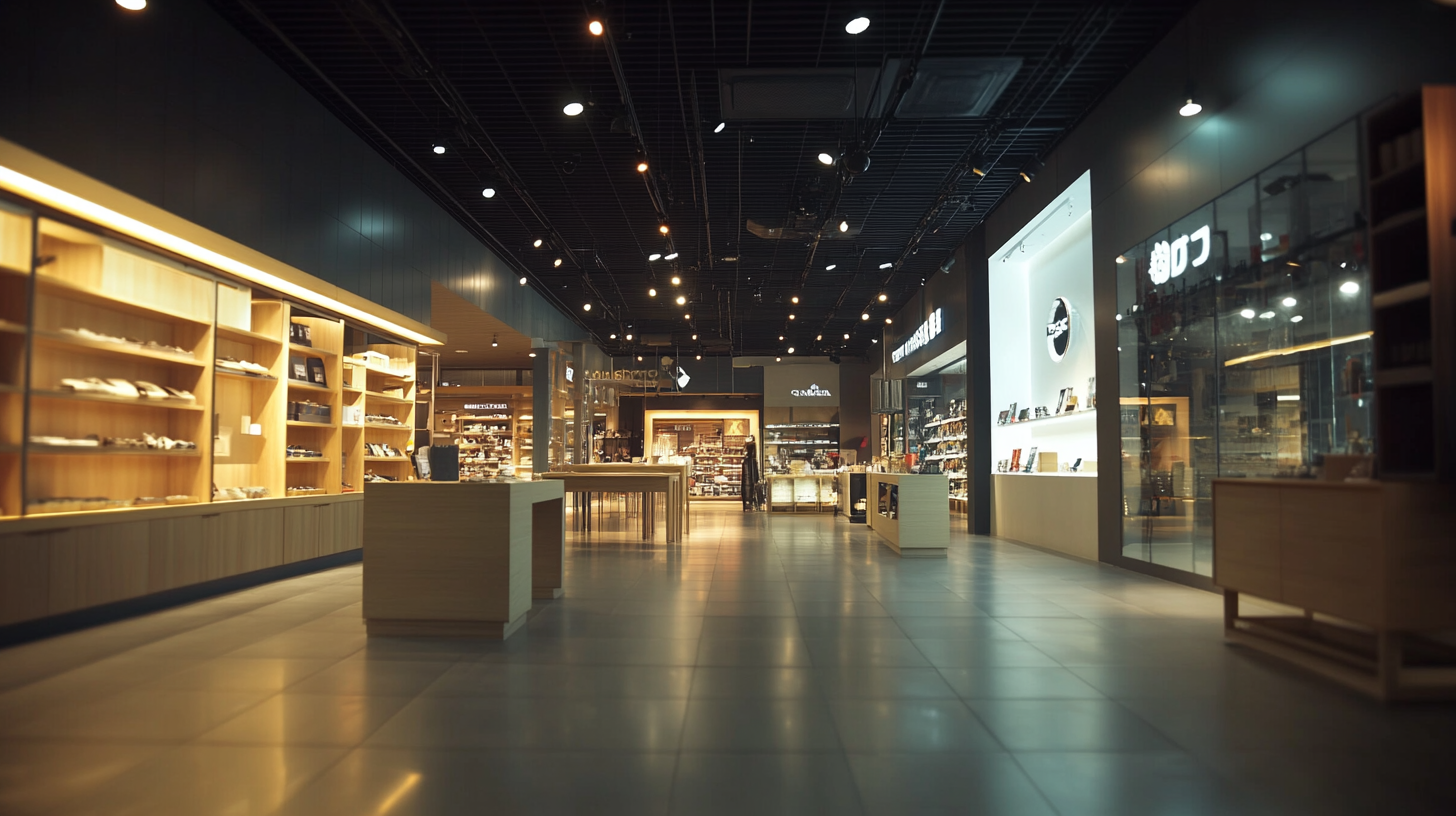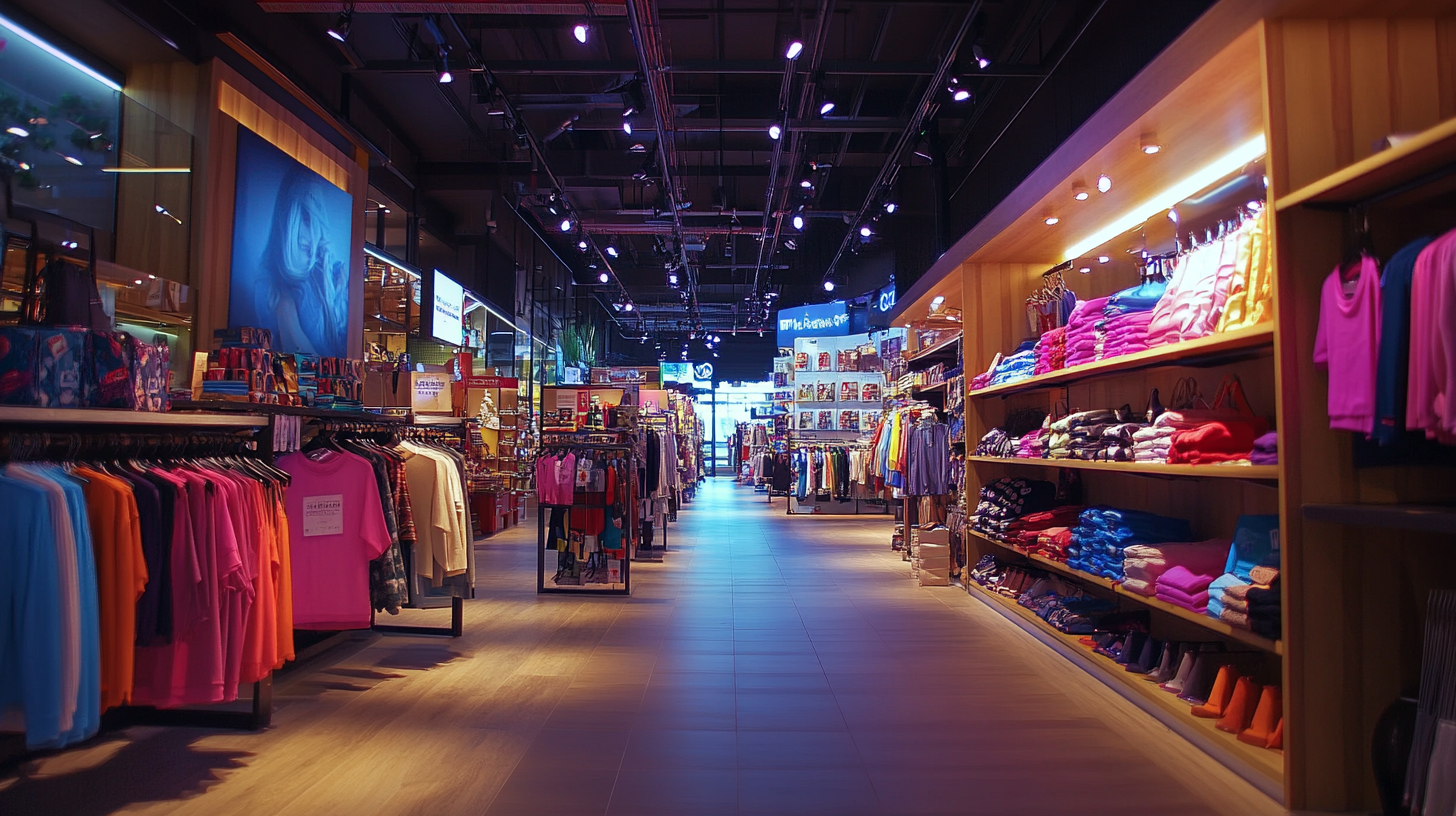Understanding the Importance of Shop Lighting in Retail Success
In today's competitive retail landscape, the ambiance of a shop plays a pivotal role in attracting and retaining customers. Among the various elements that contribute to this ambiance, "Shop Lighting" stands out as a crucial factor that can significantly influence consumer behavior and purchasing decisions. According to a report by the National Retail Federation, approximately 70% of buying decisions are made at the point of sale, and effective lighting can enhance product visibility and desirability. Furthermore, research conducted by the International Journal of Retail & Distribution Management indicates that proper lighting can increase merchandise sales by as much as 20%.
As retailers strive to create an inviting environment, the strategic use of lighting emerges as a powerful tool in shaping customer experiences and driving sales performance. In fact, a study from the Lighting Research Center found that consumers spend an average of 20% more time in well-lit stores, which directly correlates to increased customer engagement and loyalty. With such compelling data backing the significance of "Shop Lighting," it becomes evident that retailers must prioritize lighting design as an integral component of their overall marketing and operational strategies.

The Impact of Effective Lighting on Consumer Behavior and Sales Performance
Effective lighting plays a crucial role in shaping consumer behavior and enhancing sales performance in retail settings. When customers enter a store, the lighting can significantly influence their first impressions and overall shopping experience. Bright, well-placed lights can create an inviting atmosphere, highlighting key products and encouraging exploration. On the contrary, dim or harsh lighting may deter customers, leaving them feeling uncomfortable or disorientated as they navigate the space. Furthermore, the psychology of color temperature in lighting can impact consumer mood and spending behavior. Warm lighting tends to create a cozy, relaxed environment, making consumers more inclined to linger and browse. In contrast, cooler lighting can instill a sense of efficiency, which is often beneficial for fast-paced shopping environments. Retailers can strategically use lighting to evoke emotional responses—drawing attention to sales promotions or new arrivals with spotlights while employing softer ambient lighting in lounging areas to enhance the shopping experience. Additionally, effective lighting can improve product visibility, thereby influencing purchase decisions. Shining lights on new collections or seasonal promotions not only boosts their appeal but also highlights the unique features of each item. This attention can translate into increased sales, as consumers are more likely to buy products that catch their eye. By understanding and implementing effective lighting strategies, retailers can create a captivating shopping atmosphere that drives consumer engagement and improves overall sales performance.

Statistics on How Lighting Influences Shopping Duration and Experience
Good lighting is a crucial element in the retail environment, significantly influencing shoppers' behaviors and experiences. According to a report by the Lighting Research Center, well-designed lighting can enhance the shopping experience by up to 30%. This statistic underscores the idea that lighting does much more than just illuminate a space; it creates ambiance and can draw customers deeper into the retail environment.
Research indicates that brightness levels can affect the duration of shopper visits. A study published in the Journal of Sustainable Development highlighted that stores with strategically placed lighting can increase shopping time by 25%. Shoppers tend to linger longer in well-lit areas that showcase products effectively, promoting impulse buys and increasing overall sales. Additionally, almost 70% of shoppers reported that lighting impacts their perception of product quality, with warmer tones creating a more inviting atmosphere than stark, harsh lighting.
Moreover, color temperature plays a vital role in influencing shopper mood and behavior. The International Journal of Retail & Distribution Management found that stores using softer, warmer lighting not only enhance customer satisfaction but also encourage longer shopping experiences. Consequently, retailers are encouraged to consider not just the functional aspects of lighting but also how it profoundly shapes the customer journey, ultimately leading to increased loyalty and sales.

Key Lighting Techniques to Enhance Product Visibility and Appeal
Effective shop lighting is not merely a decorative element; it is a powerful tool that can significantly enhance product visibility and appeal, directly influencing retail success. Retailers need to leverage various lighting techniques to highlight their merchandise, create an inviting atmosphere, and ultimately drive sales.
One key technique is the use of accent lighting. By directing focused beams on specific products, retailers can draw customers’ attention to high-margin items or promotional displays. This method not only showcases the product features but also creates an emotional connection with shoppers, encouraging impulse purchases. Furthermore, the right color temperature can create an inviting ambiance that enhances the shopping experience. Warmer tones make customers feel more comfortable, potentially leading them to spend more time browsing.
Another important aspect is the strategic implementation of task lighting. It illuminates specific areas such as fitting rooms and checkout counters, ensuring that customers can see clearly as they evaluate products or make purchasing decisions. Effective task lighting not only improves functionality but also increases customer satisfaction, fostering brand loyalty. Overall, when retail environments utilize these key lighting techniques, they not only improve product visibility but also elevate the overall shopping experience, aligning with modern marketing strategies that prioritize customer engagement and retention.

The ROI of Investing in Quality Shop Lighting: Industry Case Studies
Lighting plays a crucial role in the overall design and ambiance of retail spaces, directly influencing customer behavior and sales conversions. According to industry studies, up to 90% of purchasing decisions are made subconsciously, with lighting being a major factor in setting the mood and guiding customers through a retail environment. High-quality shop lighting not only enhances product visibility but also helps create a shopping experience that is more pleasant and engaging.
Investments in superior lighting systems yield significant returns. A well-lit store can increase sales by as much as 20%, as brighter, strategically placed lights draw attention to featured products and promotional displays. Numerous case studies underline this, with retailers reporting improved customer satisfaction and increased dwell times linked directly to enhanced lighting design. Furthermore, innovative smart lighting solutions are gaining traction, offering dynamic adjustments to brightness and color temperature that cater to different times of day or promotional events, leading to optimized customer experiences.
Recent advancements in smart lighting technologies reflect a growing trend among retailers to leverage cutting-edge solutions to boost their sales performance. For instance, the global shipments of high-quality lighting products have surpassed 50 million units, showcasing the rising demand for intelligent lighting systems in retail. As businesses aim to enhance their brand presence and operational efficiencies, investing in quality shop lighting will remain a critical factor for success in an increasingly competitive marketplace.
Trends in Retail Lighting Design: Sustainability and Technology Innovations
In the ever-evolving landscape of retail, the significance of lighting cannot be overstated. As sustainability becomes a primary concern for consumers, retail lighting design is increasingly focused on eco-friendly solutions. Innovative technologies are emerging that not only reduce energy consumption but also enhance the overall shopping experience. LED lighting, for instance, has gained popularity due to its longevity and efficiency, allowing retailers to create inviting atmospheres while minimizing their environmental footprint.
Moreover, the integration of smart lighting systems is revolutionizing the way retailers design their spaces. These systems enable businesses to control lighting remotely and adjust it based on time of day or customer foot traffic. By utilizing data-driven insights, retailers can optimize their lighting to highlight products, create moods, and even influence purchasing behavior. As technology continues to advance, the incorporation of dynamic lighting solutions will likely become a standard practice, ultimately driving retail success.
With the growing awareness of the impact of retail environments on consumer behavior, brands are reevaluating their lighting strategies. This not only involves selecting energy-efficient fixtures but also ensuring that the lighting design aligns with their brand identity. As retailers continue to explore these trends, sustainability and technological innovations in lighting will play a pivotal role in enhancing customer experiences and driving sales.

